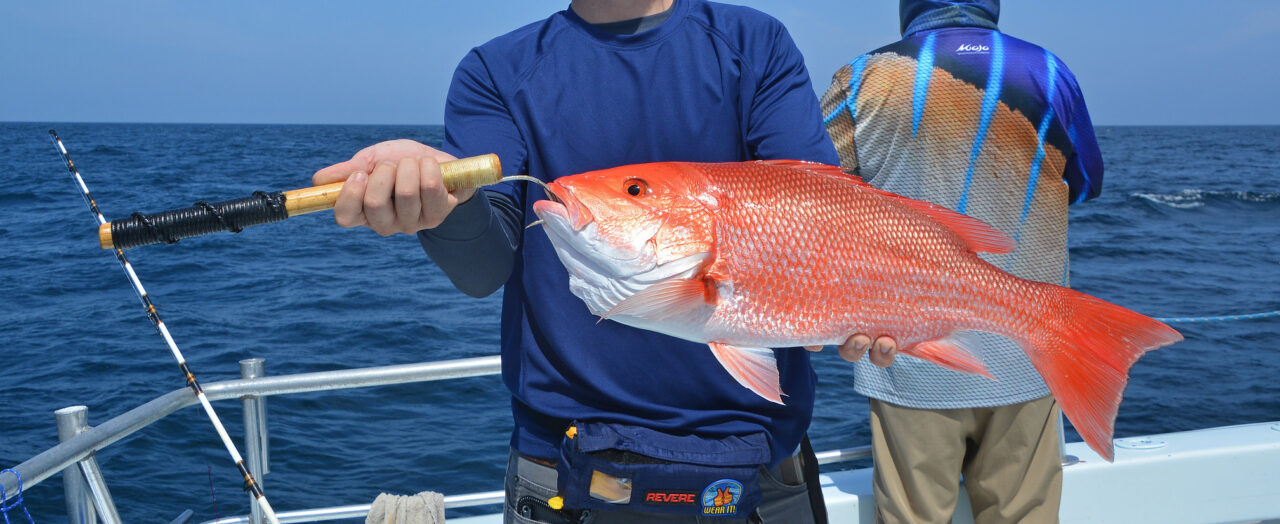
Recreational anglers are getting unwelcome news regarding red snapper fishing in federal waters off Florida’s Atlantic Coast.
“Things, from a fishing perspective, are going to get a little worse before they eventually get better,” Mel Bell, Chairman of the South Atlantic Fishery Management Council (SAFMC), said of the chance of opening up recreational red snapper fishing.
He made the remarks at the Council’s September meetings. The SAFMC is the intergovernmental body charged with the responsibility of managing federal fisheries from the North Carolina Outer Banks to the Florida Keys.
It’s a bit of a regulatory catch-22 in that red snapper is so abundant, according to a significant number of scientists and fishers, while the discards are accounting for the fish being overfished per federal regulatory definitions.
“What I contend is — we notified you as of July of last year — we need to be making rapid progress toward addressing and ending the overfishing, and that cannot take an extended period of time in order to address overfishing and rebuild the stock,” said Andy Strelcheck, Regional Administrator for NOAA Fisheries, which is also called the National Marine Fisheries Service.
The Magnuson-Stevens Fishery Conservation and Management Act, which governs federal fishery regulation, mandates overfishing end immediately, but doesn’t define “immediate.” The SAFMC’s latest snapper management modification, called Amendment 35, deals mostly at this point with gear modifications, education and outreach as ways to affect discards and discard mortality. But it’s received a fair amount of criticism already.
During a later discussion, a Council member called the amendment putting a Band-Aid on a wound that needed to be stitched up.
“In conversations that I’ve been having with many people, the concern I have is that the path we’re on with Amendment 35, I don’t necessarily view it as a solution,” Strelcheck said.
“It’s not going to achieve our broader management goals, nor our legal requirements. The reason I say that is, functionally, we’re at a point where we barely have a recreational season, and reducing the (acceptable biological catch, or ABC) will mean even shorter recreational seasons.”
He was surprised by the messaging on what NOAA Fisheries was asking the Council to do, and what might be coming. Concerns were that if discard numbers didn’t come down fast enough and by large enough numbers, massive bottom fishing closures could be in the offing.
“To me, I think there are tailored approaches to look at management options, whether we’re talking about spatial area management or anything else,” Strelcheck said. “We really need to be thinking about that, and using a term that we used several times yesterday, keep those tools in the toolbox, and really be thoughtful in how we approach this.”
There are high levels of fishing effort and overcapitalization in the area of the red snapper fishery, which especially includes Northeast Florida. Adding to that is the accuracy of modern electronics and, generally, open-access fisheries.
Fishers already reported to the Council that red snapper is in such abundance that it’s pushing out other fish in the snapper-grouper complex, including moving black sea bass, for instance, further north.
“There’s a lot of stocks — I talked about black sea bass yesterday, where we’re seeing steep declines in abundance, for a variety of factors,” Strelcheck said. “To me, this is a snapper-grouper fishery challenge and fishery problem that I think we need to look more holistically in trying to address, and red snapper’s just one component of that.”
As far north as Savannah, fishers are having to deal with navigating large red snapper populations to get to the fish they’re out on the water to catch.
“As you know, I’ve been fishing a long time, and we have had to deal with not being able to catch grouper,” said Council member Judy Helmey, owner of Miss Judy Charters. She noted that over 40 years, she developed reliable spots for fishing for certain species, and that’s growing impossible.
“It’s not because they’re not there, I just believe the red snapper has taken over so much of our bottom off the coast of Savannah,” Helmey said.
Options going forward include further adjusting catch levels, coming up with technological solutions to reduce discard mortality, limiting fishing, limiting where it occurs, or a combination of those.
“I recognize that some of these things are wildly unpopular, and I recognize that these are things that people may not want to pursue, but I view these as reasonable options that we should be looking at and thinking about as we think about snapper-grouper fishery management going forward,” Strelcheck said.
Members of NOAA Fisheries, in the short term, still suggest that completing Amendment 35 quickly is a priority, along with closing the fishery. Reducing the acceptable biological catch as suggested is a de facto fishery closure, Strelcheck said, because of the number of dead discards expected. There may be the possibility one day of recreational fishing, but it would be problematic because of the safety issues involved in that kind of derby fishing atmosphere.
“The commercial quota would be cut in half, roughly, from what it is today,” Strelcheck said.
In the midterm, the agency would like more action to reduce discards, and pilot studies to come up with better solutions. Longer-term tasks include the next stock assessment, expanded observer coverage, and an effort count by FWC, among other work.



